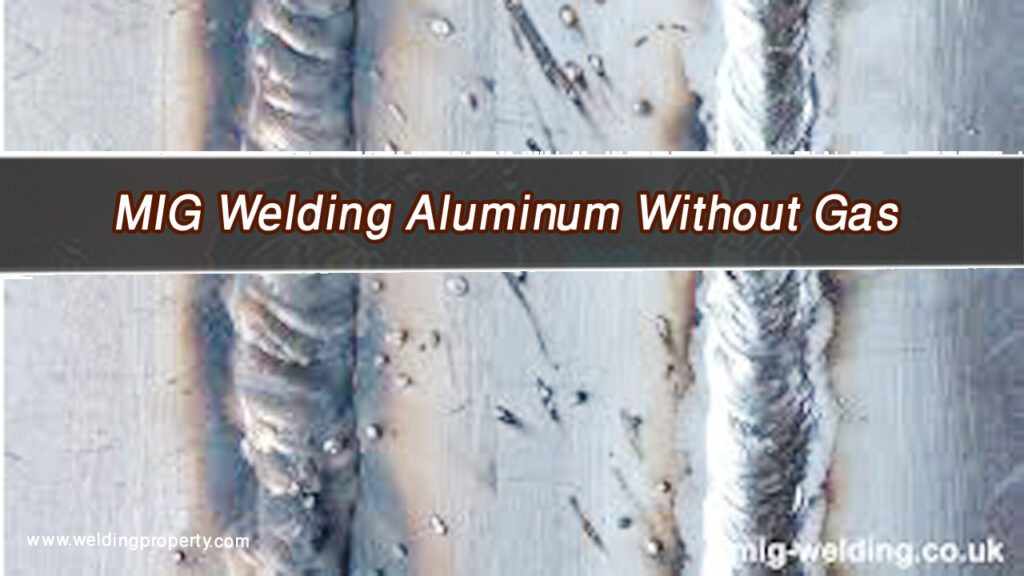I’ll never forget the first time I ran out of shielding gas mid-project. I was repairing a rusty trailer in my backyard, and the nearest welding supply store was closed. Panic set in—until I remembered hearing about “gasless” MIG welding.

Image by minoo-cn
After some trial and error (and a few spark-filled mishaps), I discovered that with the right setup, you can weld strong, clean joints without a gas tank.
Let me walk you through everything I’ve learned about using a MIG welder without gas, from choosing the correct wire to mastering technique.
What Is Gasless MIG Welding?
Gasless MIG welding, often called flux-cored welding, uses a special wire with a hollow core filled with flux. When heated, this flux creates a shielding gas that protects the weld from air contaminants like oxygen and nitrogen.
It’s perfect for outdoor projects or windy conditions where traditional gas would blow away. Think of it as a self-contained system—no external gas tank needed.
Why Go Gasless? Benefits You Can’t Ignore
- Portability: No heavy gas cylinders to haul.
- Wind Resistance: Works outdoors or in drafty garages.
- Cost Savings: Eliminates gas rental and refill fees.
- Deeper Penetration: Handles thicker, dirtier metals better than standard MIG.
I once welded a farm gate in a rainstorm using flux-core—something I’d never attempt with gas.
Essential Gear for Gasless MIG Welding
Here’s what you’ll need:
- MIG Welder: Must support flux-core wire (most do).
- Flux-Cored Wire: E71T-GS for mild steel, E308LT for stainless.
- Welding Helmet: Auto-darkening is a game-changer.
- Gloves and Jacket: Flux-core spatter is vicious.
- Wire Brush: Clean slag off finished welds.
Buy a 2-pound spool first to test settings. I wasted money on a 10-pound spool that didn’t fit my welder!
Setting Up Your MIG Welder for Gasless Operation
- Switch Polarity: Flux-core requires DCEN (Direct Current Electrode Negative). Swap the welder’s leads—positive to the gun, negative to the ground.
- Load the Wire: Feed flux-core through the liner, adjusting tension so it doesn’t birdnest.
- Set Voltage and Wire Speed: Start with the chart below, then fine-tune.
| Metal Thickness (inches) | Voltage | Wire Speed (IPM) |
|---|---|---|
| 1/8 | 18–20 | 200–250 |
| 1/4 | 21–23 | 300–350 |
| 3/8 | 24–26 | 400–450 |
Step-by-Step Gasless Welding Technique
- Clean the Metal: Remove rust, paint, and grease with a grinder. Flux-core tolerates dirt but hates contaminants.
- Position the Gun: Use a 15–20° drag angle (pointing backward as you weld).
- Start Welding: Squeeze the trigger and move steadily. Listen for a consistent “bacon sizzle” sound.
- Chip Slag: After cooling, knock off the flux crust with a chipping hammer.
Slower travel speeds reduce porosity. I practiced on scrap until my beads looked like stacked dimes.
Gas vs Gasless MIG Welding: Quick Comparison
| Feature | Gas MIG | Gasless MIG |
|---|---|---|
| Cost | Higher (gas costs) | Lower |
| Portability | Limited by tank | Ultra-portable |
| Outdoor Use | Poor (wind blows gas) | Excellent |
| Weld Appearance | Clean, smooth | Rougher, requires slag removal |
| Metal Thickness | Best for thin metals | Handles thicker metals |
Common Problems and Fixes
- Excessive Spatter: Lower voltage or increase wire speed.
- Porosity (Holes): Clean metal better or slow your travel speed.
- Wire Jams: Check liner for kinks and reduce drive roll tension.
I once fought erratic arcs for hours—turned out my ground clamp was loose. Always check connections first!
Safety Tips for Gasless Welding
- Ventilation: Flux-core fumes are toxic. Work outside or use a fan.
- Fire Safety: Keep a extinguisher nearby. Sparks can fly 15+ feet.
- PPE: Wear a respirator; spatter burns through cotton.
A friend learned the hard way when a spark melted his synthetic shirt. Now we all wear leather sleeves.
Maintaining Your Gasless MIG Setup
- Clean the Gun: Blow out dust with compressed air monthly.
- Store Wire Dry: Moisture ruins flux. Keep spools in a sealed bag.
- Replace Contact Tips: Worn tips cause erratic arcs. I change mine every 10–15 hours.
FAQs About Gasless MIG Welding
Can I use gas and flux-core on the same welder?
Yes! Just switch polarity and gas settings.
Is gasless welding as strong as gas?
For most DIY projects, yes. It’s widely used in construction and shipbuilding.
Can I weld aluminum with flux-core?
No—flux-core is for steel and stainless. Use spool guns for aluminum.
Why is my weld so smoky?
Flux-core produces more fumes. Improve ventilation or wear a respirator.
Can I weld sheet metal gasless?
It’s tricky. Use thinner wire (0.030”) and lower settings to avoid burn-through.
How do I prevent slag inclusions?
Chip slag between passes and maintain a consistent angle.
What’s the best flux-core brand?
Lincoln Innershield and Hobart Fabshield are my go-tos.
Can I use CO2 gas with flux-core?
No—it’s self-shielded. Gas isn’t needed (or recommended).
Final Thoughts
Gasless MIG welding opened up a world of projects I once thought impossible—from fixing tractors in fields to patching boats dockside. It’s not as pretty as gas welding, but it’s rugged, reliable, and ridiculously convenient.
Grab some flux-core wire, tweak your settings, and practice on scrap. Before long, you’ll wonder why you ever lugged around a gas tank.
Got a welding story or question? Drop a comment—I’d love to hear how gasless welding works for you!

Endow Russel the owner chief editor of giftendow.com . I am a mechanical engineer and assign to an local firm with much experience in welding and industrial equipment.

